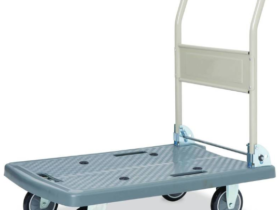After a long construction period, many owners thought that the matter was over and they could finally move in. In fact, at this time, it should not be taken lightly, because there is still the final step of decoration, acceptance. Check and accept it well, then you can move in with peace of mind.
Part.1 How to accept the acceptance of wall paint
1.After the wall paint is dried, use visual inspection and hand feeling methods to check and accept under natural light, and check that there is no obvious color difference, efflorescence, color reversion, and brushing;
2.Stand at a distance of 1.5m from the wall to observe, and check for trachoma, color biting, dropout, color difference, penetration, etc.;
3.Connect the light bulb with a wire. The distance between the light bulb and the wall is ten centimeters. Check it along the wall. There is no phenomenon of powder falling, wave, or missing brush.
Acceptance misunderstanding
1.There is a quality problem with the powder
During the construction process, there will be dust sticking to the wall, and the phenomenon of powder falling will appear after the construction. In fact, these are just dust. Just wipe it off with a clean towel or duster.
2.The smoother the wall, the better
Of course, the smoother the spray application, the better. However, for roll coating construction, generally the wall painted by roll coating will have a roller print. If the wall is particularly smooth, it may be caused by adding too much water to the paint. It should be checked whether the knurling mark on the wall is even. meticulous.
Part.2 Wallpaper Acceptance
Acceptance method: visual inspection or use a bright flashlight
Acceptance criteria: The wallpaper should be accurate, pasting, no blistering, and the flowers should be cut according to the regulations, and the edges of the paper should not be torn.
Acceptance criteria for ceramic tiles
- Check whether the brick surface is flat, whether the gaps are regular and consistent, whether there are broken or chipped corners;
- Pay attention to the correct position of tiles and waistline;
- Pay attention to whether there is an empty drum phenomenon, use a small hammer to gently tap each tile on the wall, and judge where there is an empty drum phenomenon by recognizing the sound.
Part.3 Drainage acceptance
1.Waterway installation acceptance is mainly to check whether the pipeline is firm, you can turn on the faucet to check whether it will shake;
2.Check whether the water supply of the water pipe is unblocked and whether there is water leakage, you can wipe it with a paper towel for testing;
3.Check whether there is “flooding” and “slope” in the room with floor drain. You can turn on the faucet or shower. After a period of time, check whether the ground water is unblocked and whether there is local water accumulation.
4.The floor drain, toilet and basin should be tested to see if the water is smooth.
Part.4 Electric box acceptance
- Electric box installation standards stipulate that electric boxes and switch boxes should be installed upright and firm, and must not be upside down or skewed;
- In the case of power failure, flip the switches and leakage protector by hand to check whether the operation is flexible;
- Open the front cover of the electric box, check whether the wiring of the electric box is neat and whether the circuit mark is clear, etc.
Part.5 electrical acceptance
- Check the installation of electrical appliances, first turn off the main switch of the electrical box, and then gently shake various electrical appliances by hand to check whether there is any looseness or falling.
- Check whether the installation positions of various electrical appliances are accurate according to the design drawings and the layout drawings of the electrical appliances.
Part.6 door acceptance
- For wooden doors made on site, it should be checked whether the opening direction of the door is reasonable, whether it is flexible when opening, and whether there is any blockage or rebound phenomenon;
- Check whether the door seam is reasonable, the door seam above and left and right of the wooden door cannot exceed 3mm, and the bottom seam is generally 5-8mm.










